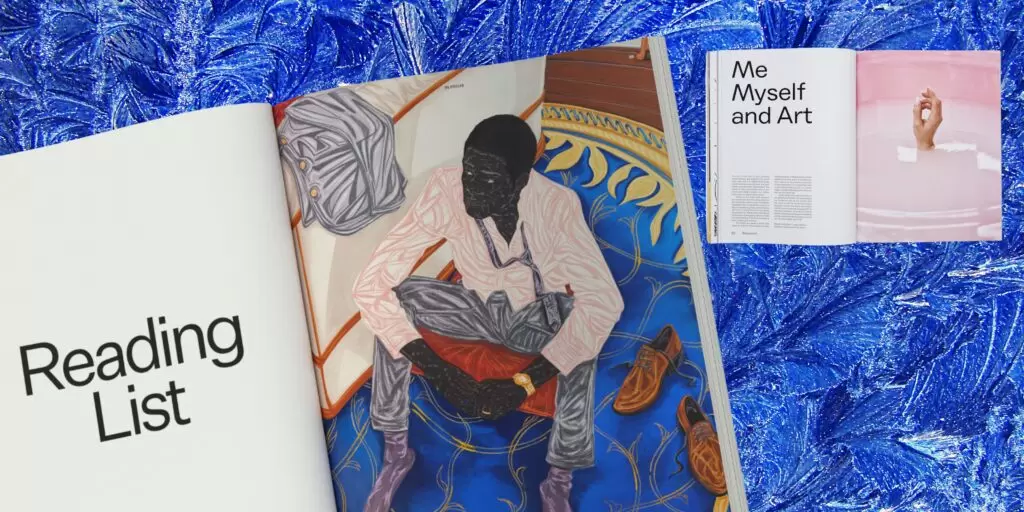Inside Out – essays by an art journalist. Essay 3: pricing
We live in an era when the art market isn’t in decline even when the financial markets are. We also live in a time when the value of the whole art market is only a tiny fraction of what most IT giants are valued at. This essay from new .ART blog series Inside Out addresses the origin of art pricing, slightly nostalgic of the times when art was mostly priceless.


How we allocate value to art
We have agreed that the value of art is ultimately determined by how much time we are ready to spend on it. And when talking about time, we mean money, for we remember that time is money. But where art is concerned, this direct conversion is not quite obvious.
The value of art has long since been assessed in monetary terms, which is also the case now. But the attitude towards this is now entirely different. Previously, art’s value was determined by how much was spent on it, and now art’s value is determined on how much money it has earned.
Once upon a time, it was a bottomless well that could never be filled with golden coins. In the history of classical art, a high price that a commissioner paid for a work of art only indicated that he intended from the outset to obtain something special and important. Art patrons needed a general benchmark to determine the value of works yet to be painted by Titian as related to works yet to be painted by Uccello.
Money was exchanged for talent with a view to the future. And the very significant amounts in question were not always paid so that the commissioner could receive and enjoy the work ordered. The price was expected to glorify the commissioner even before the work was finished. The allocation of money to the artist was a symbolic act; no one could warrant that the final piece of art would be worth the money spent on it and wouldn’t be abandoned by the artists after years of work, be a technical failure like Leonardo’s murals, or even start crumbling like the Santa Maria del Fiore bell tower. It was a gamble, a bet on eternity that could not always win and was usually not expected to be reimbursed. Such an attitude is especially interesting since the art patrons of the time included not only monarchs but also bankers and merchants, who were perfectly capable of counting money. Nevertheless, the history of art is largely a history of commissioners’ disappointment. For example, the case of the Night Watch by Rembrandt is a failed order story. It is a masterpiece for us, while its commissioners were seriously disappointed with it.
Who used to pay for art before it became a luxury good?

Chapel of the Magi at Palazzo Medici Riccardi in Florence, Italy
This system of money allocation for art was not always driven by what we now call public demand. Many works of art that now constitute the glory of museums and draw crowds (like the Rafael Rooms at the Vatican Palace) were made for private interiors and were not at all intended for broad distribution, as we’d say today. And even in cases where a work was addresses to society, it was often commissioned by private persons. Portraits were privately ordered most of the time (with the notable exception of ‘State portraits’, a substitute for worldly icons or the equivalent of profiles that were minted on golden coins). Portraits were also an exception because they did not take long to make. In those times when old age would come after 30, they turned out to be the only possibility to buy immortality or at least a hope for it. Not infrequently, portraits would depict both living and dead family members. That was an attempt to prolong their existence on canvas.
There was still another reason for granting money: politics. Some works of art carried an obvious allegorical meaning and were meant to aggrandize the commissioner, e.g. by portraying him next to saints. Nevertheless, even in those distant times everyone understood this as a conventional gesture, and no one expected their descendants to really believe that it was Lorenzo Medici heading the magi as they were riding to adore Baby Jesus – as was quite clearly shown at the Magi Chapel in the Palazzo Medici-Ricardi.
But, anyway, it was not about investment; even when things were sold, they were bought not for resale but for donation, at most. An icon, an altar, or the ruler’s portrait was ordered with a view to receive dividends on the investment from the sovereign worldly or heavenly, rather than obtaining – or even selling – a work of art. Dividends for icons would be paid by God.
Modern way of pricing art

This is quite different from our current understanding of the price of art, which finally emerged in the 19th and 20th centuries as the difference between the amount of money invested in its creation (paid to the artist and then derived from its re-sale by the marchand and, later, by the gallery owner). Re-sales would gradually increase the work’s price – though we should be cautious about those mad curves, because the price of money would vary so widely at different times. This is precisely why art has been considered a safe haven at times of unreliable money ever since.
In the 20th century, the idea of profiteering on art became quite popular, meaning the possibility of speculating for a rise or fall of a master’s quotations repeatedly during one’s lifetime or, conversely, making a long-term investment in art so that the following generations of one’s family could profit from it. Such schemes would fail more often than work – especially as regards contemporary art rather than classical one, with its well-established price lists and reputations.
Nothing is easier and less sensible than simply investing money in modern art. Those willing to take the risk are well-advised to decide from the outset what they are mainly after: art, glory, or money. Trying to combine those three goals is a losing proposition. Two legends confuse new entrants into the art market. They used to hear talk of art as a very special spiritual substance – and a priceless one, on top of it. Still, the boom of contemporary art that the world saw in the 20th century showed art to be a commodity like all others. And, secondly, as such it has a price – and quite a definite one. Like any other market, this one values names and reputations. Here the name is bought, not just a piece of art. However, the creation of names and reputations pertains to special professions and constitutes the power of the guild of critics, art dealers, and auctioneers who hate one another to death but work hand in hand in this respect.
Investing in modern art

“Self-Portrait with Bandaged Ear” Vincent van Gogh 1889
The contemporary art market is the most complicated and the riskiest field for investment. A gain here, although possibly large and pleasing, which is more important, is rather an exception than the rule. The history of arts seems to show examples of success. A classic example is Van Gogh, about whom Camille Pissarro once said: ‘I thought he would either go mad or leave all of us far behind. But I didn’t know he would do both.’ Vincent would remise his works to his brother Theo for a monthly rent that didn’t exceed 200 francs. At current auctions, Van Gogh remains one of the most expensive artists, with his paintings priced at tens of millions of dollars. True, this took almost a century to achieve, so few initial owners could reap the fruit of this fabulous growth; but it is now considered essential to find one’s own Van Gogh. In this expectation, many buy works by little-known artists and wait for a miracle that almost never comes. The myth of an unrecognised genius who works at his quiet studio for an unpretentious living but patiently waits for posthumous glory remained in the past century. Such an artist is left with no chance in the market. When he gets out of his basement, he is pale, ugly and not known to anybody.
I cannot remember the author of a science fiction story about someone reaching Van Gogh in a time machine and buying his works wholesale. With his trunk packed with masterpieces, he drives to contemporary art dealers – only to discover that no such artist is known, loved, or wanted in his own day. Posthumous renown is sheer luck, no lesser than becoming known while alive.
The law is simple: if you have saved money buying paintings by an unknown artist, you will have to spend a hundred times more to make him famous. Notably, modern art took long to be recognised as art at all. The resistance was actually overcome by money. Regular and constant investment created the myth of modern art: a system of museums and a network of galleries and critics that, in turn, helped form a new art philosophy.
Theoretically, this system of values can be overthrown once again, but an attack on the established names and reputations requires big money as well as great courage. For on the other scale there is also the welfare of dealers, gallery owners, and collectors who will do their utmost to prevent dumping and especially an aesthetic overturn.
The context and risks of creating an art collection

Armand Hammer Dies, Art Patron
Gathering art carries the risk of mixing up the end and means. If he cannot draw a hard and fast line between art and money, a gatherer runs the risk of becoming a collector. From a person earning his living on art, a collector turns into an addict squandering all spare cash on his passion. This money will almost never return to him; even if he can earn something, he will re-invest in his collection like a professional gambler.
Also, it is not enough to be rich and lucky to create a significant collection. You should also live at a time when the political and economic situation is fatal and art treasures change hands. Such are the origins of the success of Peggy Guggenheim who gathered most of her collection at a time when artists and owners of paintings fled Nazi-occupied France and she, being an American, could buy things for a song. This was also the situation of Armand Hammer in hungry Russia of the 1920s, who packed his Moscow apartment with art that ‘could rival any museum’, as his biographer John Walker wrote. Baron Heinrich Thyssen-Bornemisza’s collection was concurrently assembled in post-war Germany as the owners of rich collections got ruined and abundant supply brought the prices down.
Dealing in art in this way is no different from scalping any other valuable commodity – gold, oil, or grain. In the modern world, art fits into this list and can sometimes beat all haven assets in terms of price growth. But we should remember that it is always an exception, and just as persistently art tends to lose all market value; this happens when it lands at a national art museum or falls to a collector who will sit on it while alive and want it put into his coffin – which is said to have happened to a Van Gogh bought by a Japanese collector. True, even then a price may reappear: Egyptians’ posthumous treasures have found their way from graves to the market as well as the British Museum, and the State Hermitage kept selling its Van Eycks, Rafaels, Titians and Rembrandts in 1929–1934. Art will probably never become priceless again.




